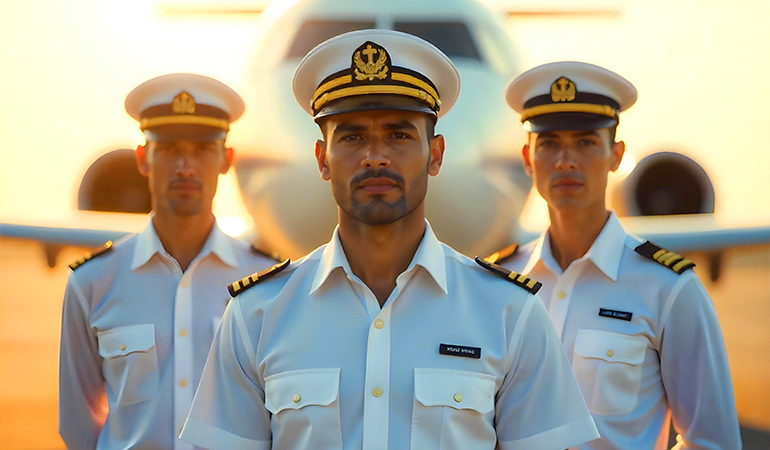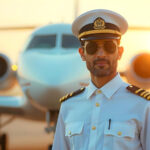Aviation remains one of the most exciting and rewarding careers in India. As domestic carriers grow at a rapid pace, expand international flights, and the need to have skilled professionals in the industry, commercial pilots are one of the most sought-after professionals in the industry.
This guide will give a clear understanding of the procedure that one has to follow to achieve a Commercial Pilot License (CPL) in India and also the role that the Indian Group of Institutions (IGI), Mangalore, plays in helping the aspiring pilots at every step of their career.
Step 1: Eligibility Criteria
Before beginning training, candidates must ensure they meet the following requirements:
- Age: Minimum 17 years for a Student Pilot License (SPL); minimum 18 years for a CPL.
- Education: Completion of 10+2 (or equivalent) with Physics and Mathematics. Candidates without these subjects may qualify through the National Institute of Open Schooling (NIOS).
- Language Proficiency: Competency in English is mandatory.
- Medical Fitness: Applicants must clear DGCA-approved medical examinations (Class-2, followed by Class-1).
Step 2: DGCA Medical Examinations
- Class-2 Medical: This is a prerequisite before joining flight training. It checks vision, hearing, ECG, and general health.
- Class-1 Medical: Required to issue CPL. Administered at DGCA authorized medical centres and valid up to 6-12 months depending on age.
It is recommended to finish the medical process as early as possible to prevent delays in training.
Step 3: DGCA Computer Number
The candidates are required to apply for a unique Computer Number via the DGCA eGCA portal. This is the official number for all DGCA exams and licensing. The required documents are academic records, medical certificates, photographs, and identification proof.
Step 4: Enrolment in a DGCA-Approved Flying School
It is important to choose the appropriate training institution. Issues like infrastructure, aircraft fleet, quality of simulators, and experience of instructors play a major role in determining training outcomes.
At IGI, Mangalore:
- Training is done under DGCA approval and is therefore in line with the regulatory standards.
- Students are provided with access to state-of-the-art simulators and professional flying instructors with years of experience.
- The site offers good weather conditions that do not interrupt flight training.
Learn more about IGI’s Pilot Training Course
Step 5: Ground Training and DGCA Examinations
Aviation training is based on theoretical knowledge. Students will have to undergo ground school on the following topics:
- Air Regulations
- Air Navigation
- Aviation Meteorology
- Aircraft Technical General and Specific
- Radio Telephony (RTR)
IGI offers a systematic course, exam training, and guidance so that students can be able to reach the DGCA standards.
Step 6: Flight Training
Practical flying begins under the supervision of qualified instructors and progresses to solo flights. Training includes:
- Dual flights (with an instructor)
- Solo flights
- Cross-country navigation
- Night flying
- Instrument flying
Each flight hour is recorded in the pilot’s logbook, which is a mandatory document for a license application.
Step 7: Accumulation of Flying Hours
To obtain a CPL, students must have at least 200 hours of flying experience, of which:
- 100 hours as Pilot-in-Command (PIC)
- 50 hours of cross-country flying
- 10 hours of instrument flight
- 5 hours of night flight
IGI has a structured training program where students meet these milestones most effectively.
Step 8: RTR (Aero) Examination
This test is administered by the Wireless Planning and Coordination (WPC) Wing and involves testing of radio communication and communication with Air Traffic Control. It has written and oral elements.
Step 9: CPL Application via DGCA
After training, exams, and flight time, the candidates can apply for their CPL on the DGCA eGCA portal. The submissions required include:
- Verified pilot logbook
- Ground examination certificates
- Medical certificates
- Flight endorsements
After the approval, DGCA grants the Commercial Pilot License.
Step 10: Career Pathways After CPL
CPL holders can explore various opportunities.
- Airline cadet schemes
- Flight training (to add additional hours)
- Charter and business jet
- Cargo operations
At IGI, students enjoy career workshops, mentorship, and placement support, making the transition to employment easy.
Why Choose IGI?
- DGCA-approved pilot training
- Full ground and flight training
- Contemporary simulator centers
- Faculty with a lot of industry experience
- Career guidance and placement assistance
Contact IGI today to begin your aviation journey.
Frequently Asked Questions
How much will the expense be to obtain a CPL in India?
The expenses are usually between 35-45 lakhs, depending on the training institute, aircraft availability, and the time taken in the course.
What is the duration of CPL training?
CPL training typically takes 18 to 24 months on average, depending on weather, aircraft availability, and examination availability.
How much do fresher commercial pilots earn in India?
A fresh First Officer in a domestic airline can earn between 1.5-3 lakhs per month, and senior Captains on international routes can earn as much as 8-12 lakhs per month.
Is a Type Rating required after CPL?
Type Rating (training on a particular aircraft model, such as Airbus A320 or Boeing 737) is not a requirement to issue CPL, but is normally required by airlines before employment.
Conclusion
The process of becoming a licensed pilot in India is organized, demanding, and very gratifying. Under the proper guidance and training, young people with ambitions to become aviators can fulfill their career ambitions and attain prestigious aviation careers.
The Indian Group of Institutions (IGI), Mangalore, with its DGCA-approved training programs, modern facilities, and dedicated placement support, offers a perfect launch pad to start this journey.
Read more: The Future of Indian Aviation: What Students Should Know




